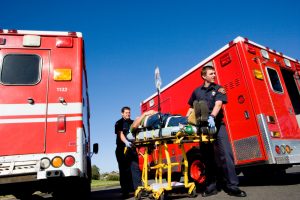Employer-reported nonfatal workplace injuries and illnesses decreased 5.7% in 2020, according to data released November 3 by the Labor Department’s Bureau of Labor Statistics (BLS). Private industry employers reported 2.7 million nonfatal workplace injuries and illnesses in 2020—down from 2.8 million in 2019.
The total number of injury and illness cases declined due to a drop in injury cases, with private industry employers reporting 2.1 million nonfatal injuries in 2020—down from 2.7 million in 2019. However, the number of reported illness cases more than quadrupled to 544,600 cases, which is up from 127,200 cases in 2019, according to the BLS. The health and social assistance industries were heavily affected.
Incidents reported in the Survey of Occupational Injuries and Illnesses (SOII) included work-related cases of COVID-19, which is considered a respiratory illness under Occupational Safety and Health Administration (OSHA) illness criteria. A disease is considered work-related when a worker is infected while performing his or her work-related duties.
The Labor Department’s Occupational Injury and Illness Classification System (OIICS) does not include a code specifically for COVID-19; cases of COVID-19 are reported under the Nature Code 3299—“Other diseases due to viruses, not elsewhere classified.” The SOII collects detailed case information, including nature, for workplace incidents requiring at least 1 day away from work (DAFW).
Nursing assistants had the highest number of cases involving DAFWs in 2020, with 96,480, an increase of 68,890 cases (249.7%) from 2019.
DAFW cases for registered nurses increased by 58,590—290.8%—to 78,740 cases. Nursing assistants, registered nurses, and licensed practical and licensed vocational nurses had notable increases in their DAFW incidence rates in 2020.
Total injury and illness cases decreased or remained the same in all private industry sectors, except for healthcare and social assistance, which increased 40.1% in 2020. The healthcare and social assistance sector had 806,200 private industry injury and illness cases in 2020. Over half of cases—447,890—resulted in at least 1 DAFW. Of 390,020 private industry DAFW cases as a result of other diseases due to viruses not elsewhere classified, the healthcare and social assistance sector accounted for 288,890, or 74.1%, of those cases.
Other highlights of the BLS report include:
- DAFW cases for men in private industry increased 7.8% to 577,990 in 2020 from 535,980 in 2019, and DAFW cases for women in private industry increased 68.0% to 585,540 in 2020 from 348,600 in 2019.
- All private industry workers had a median of 12 DAFWs in 2020.
- Private industry workers aged 65 or over had a median of 14 DAFWs due to injuries and illnesses in 2020 compared with 16 days for the same age group in 2019.
The SOII is the BLS’s first injury and illness report for calendar year 2020. The BLS will have a second release on December 16, providing results from the Census of Fatal Occupational Injuries (CFOI) of all fatal work injuries occurring in the United States during the calendar year.

